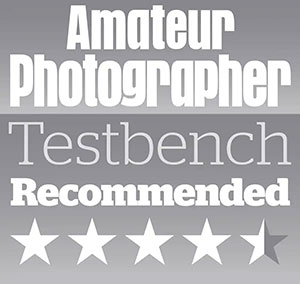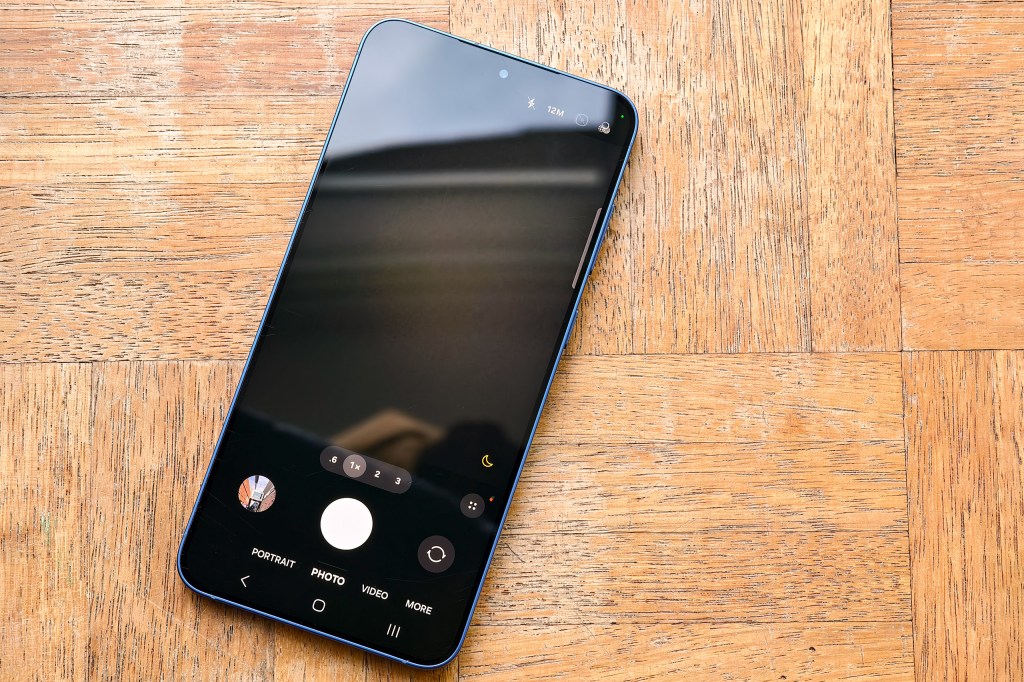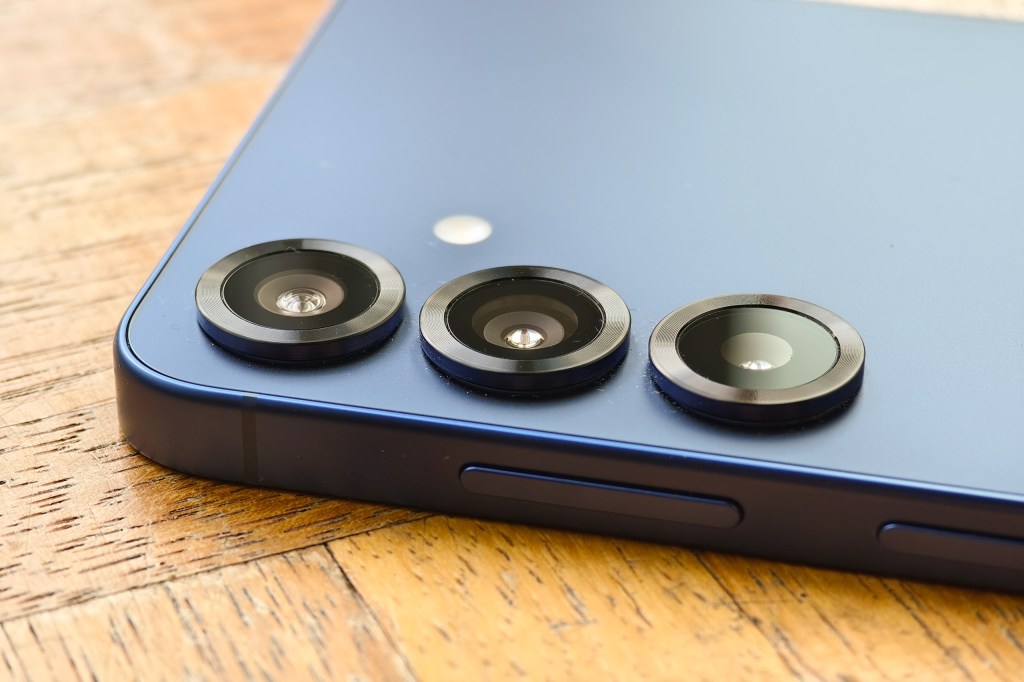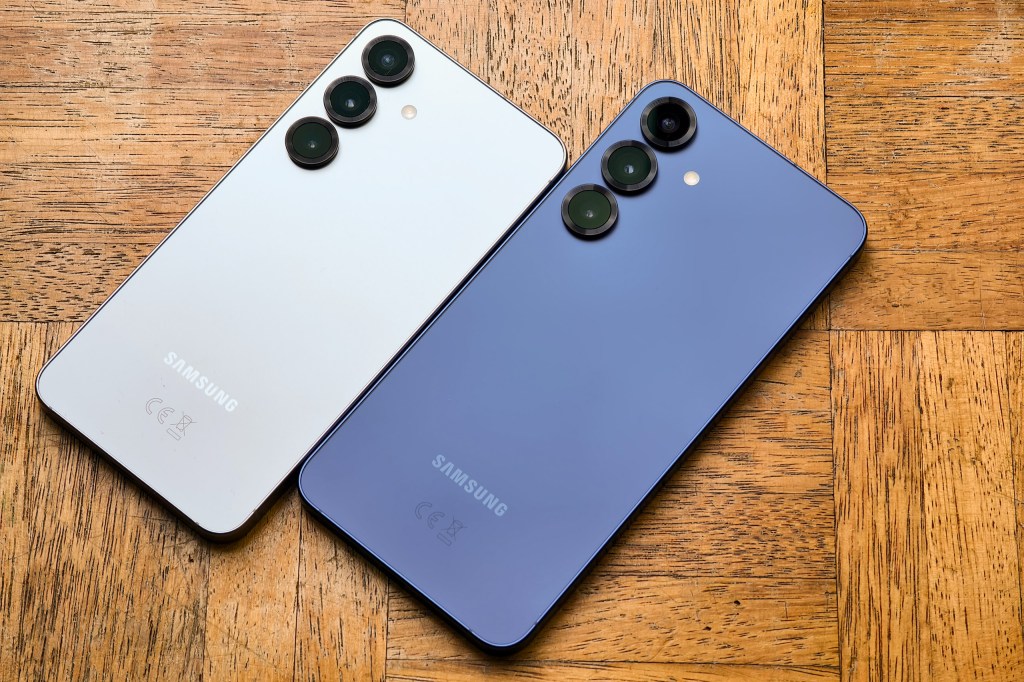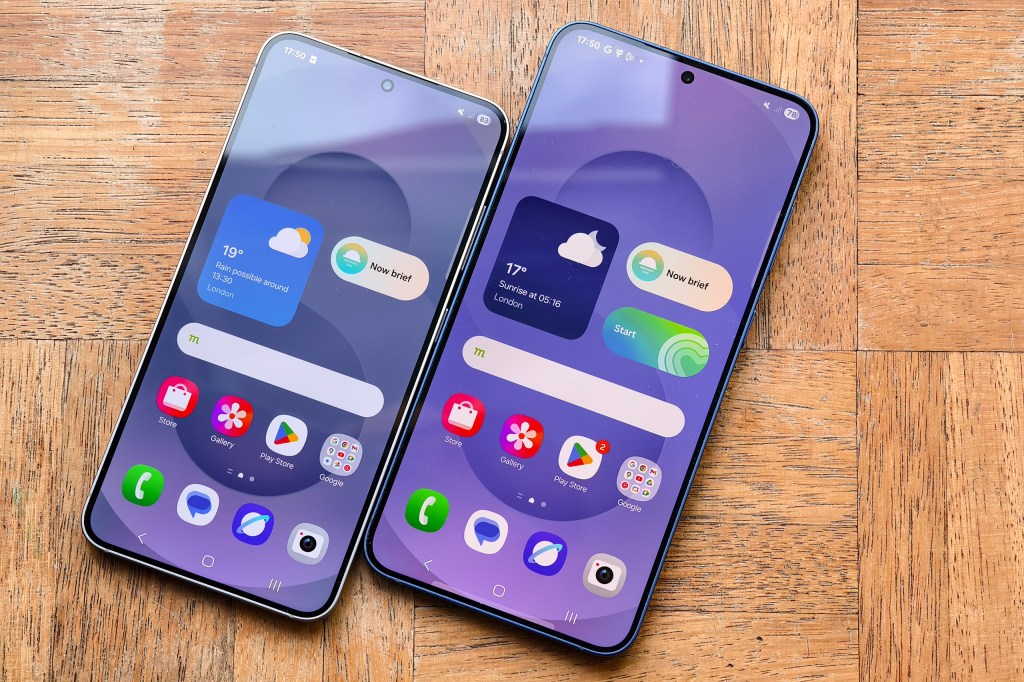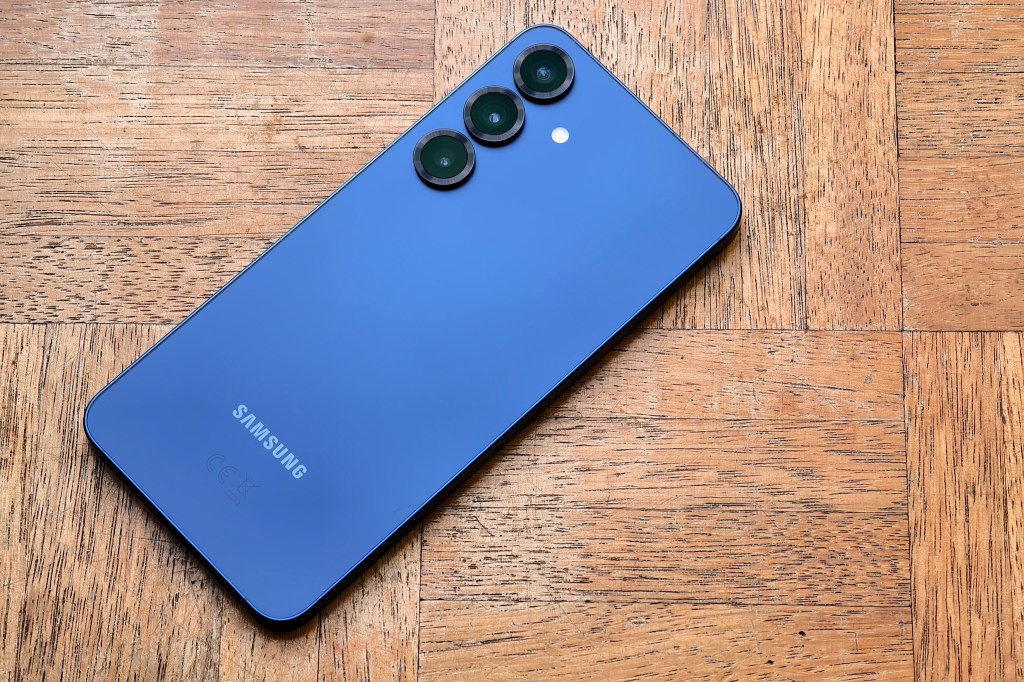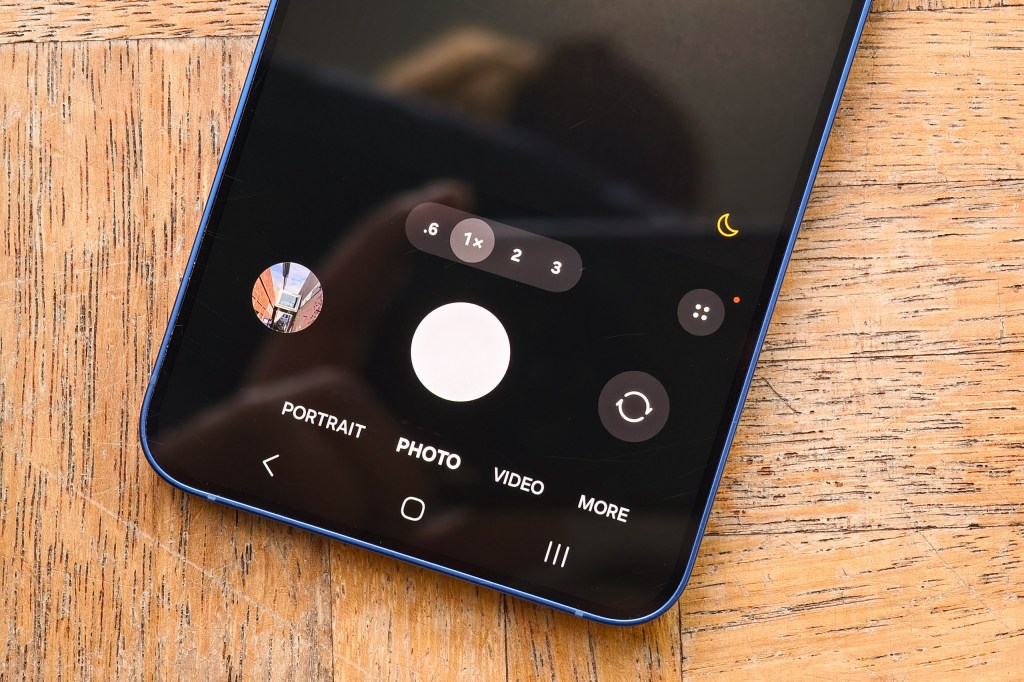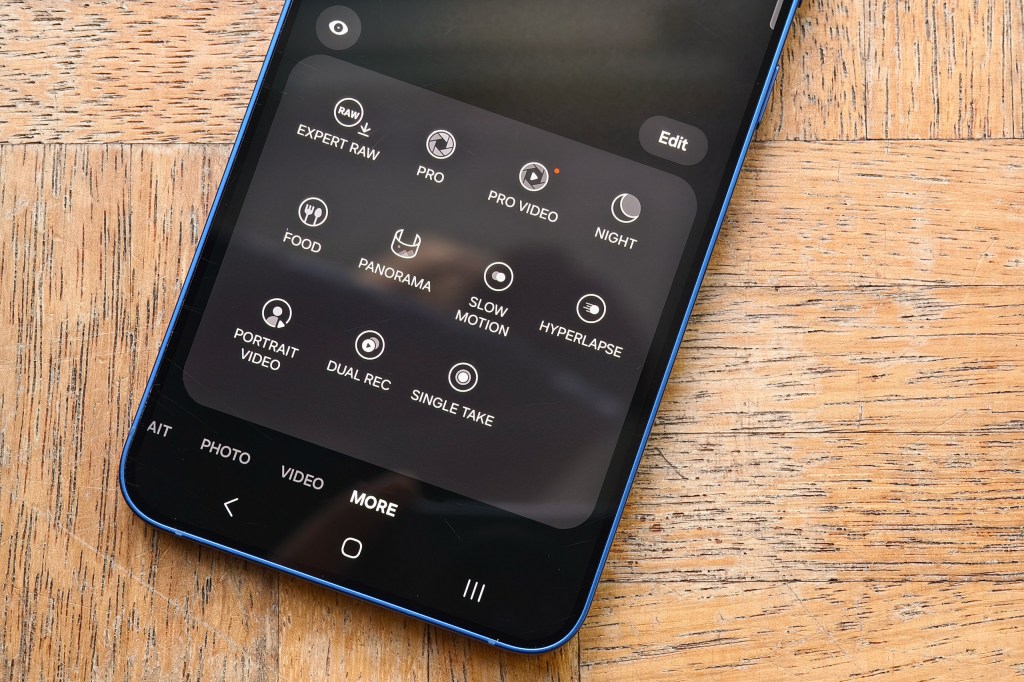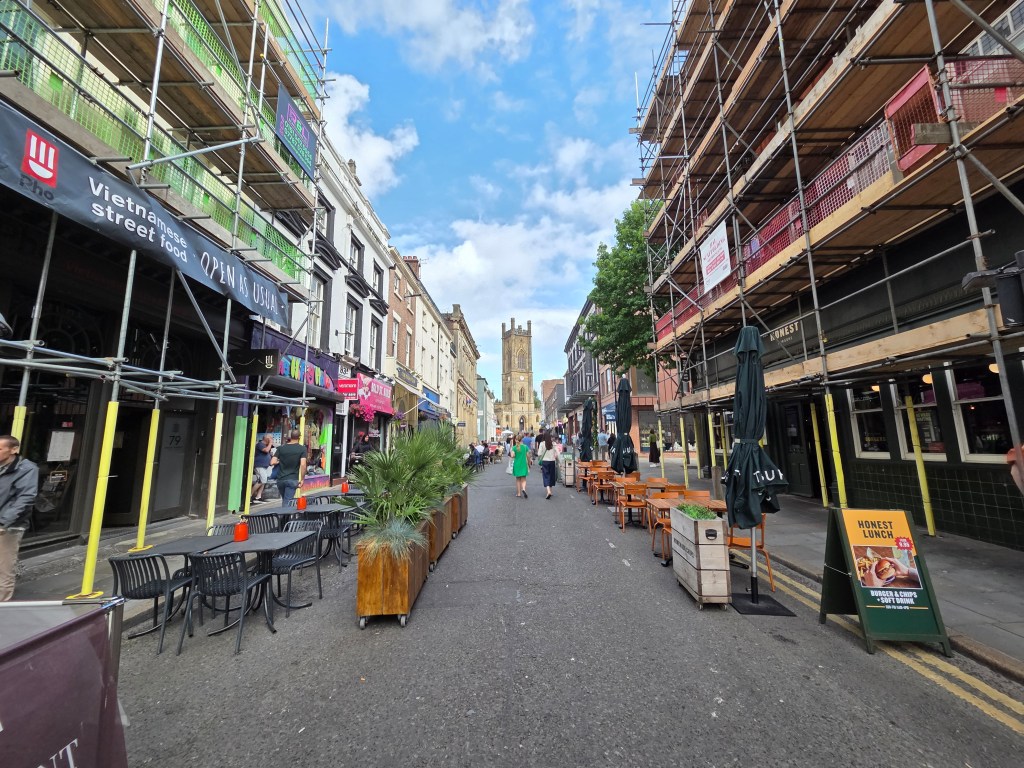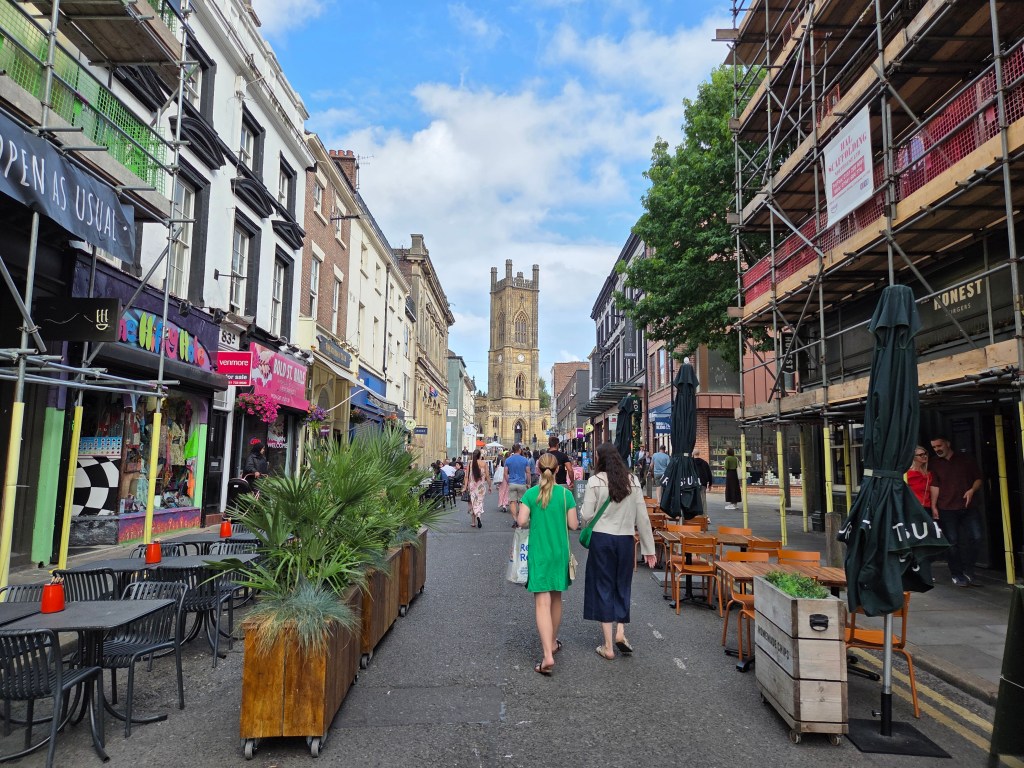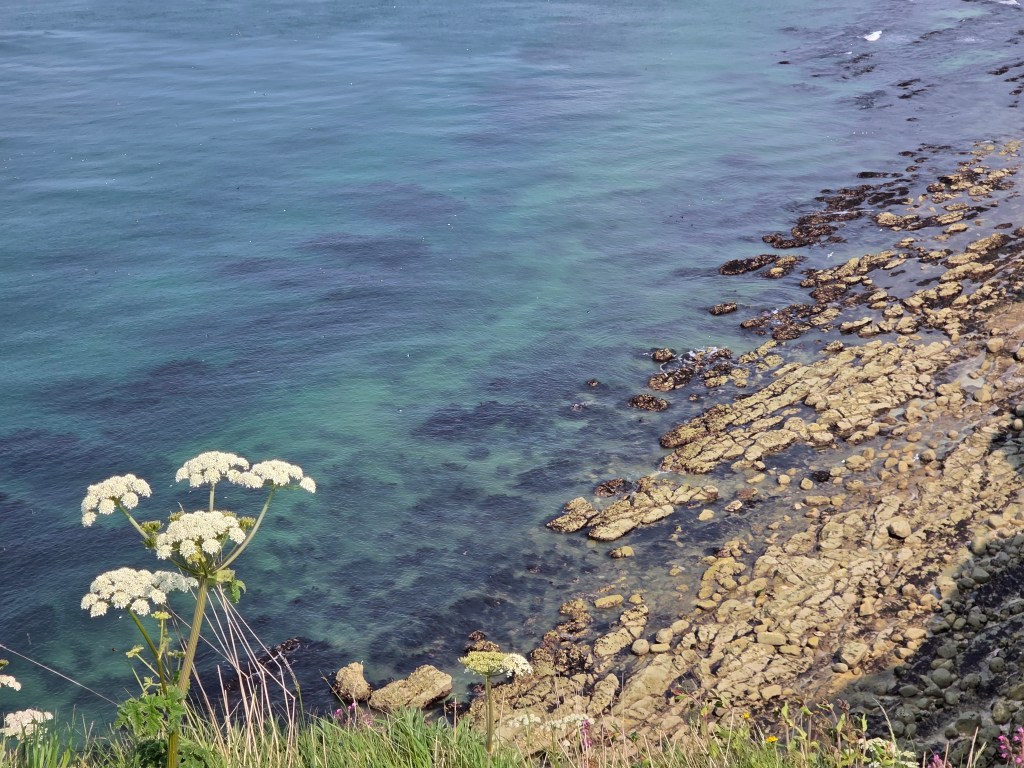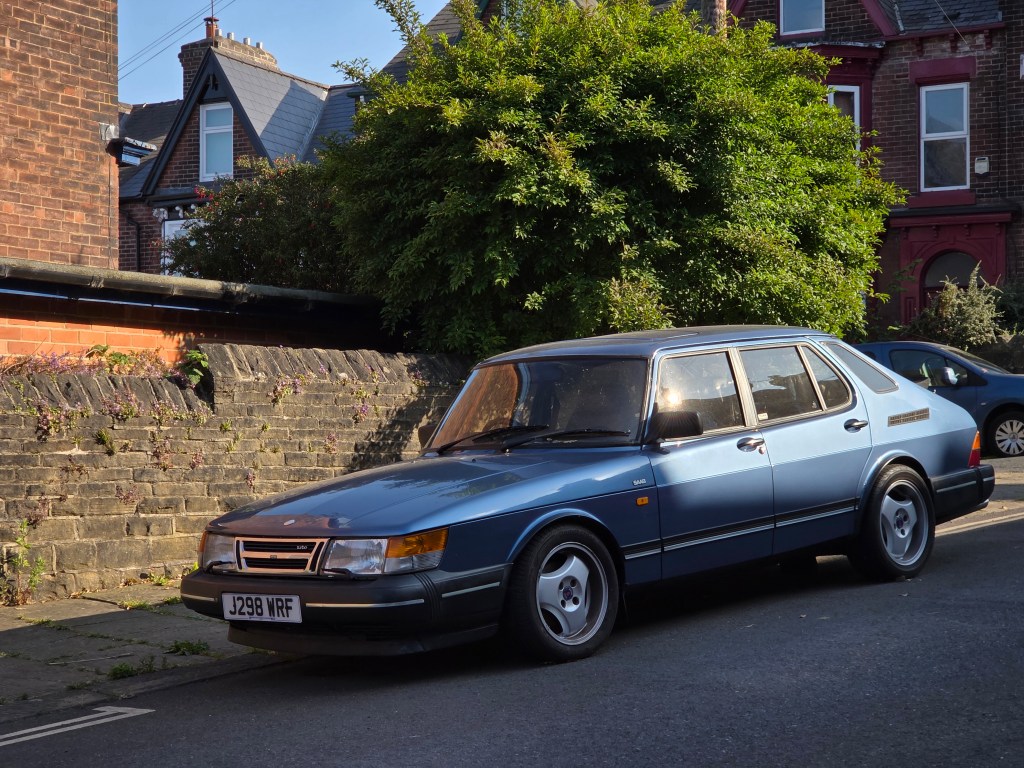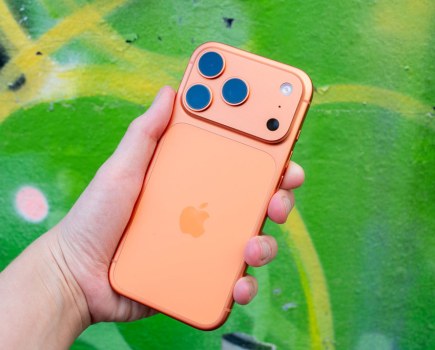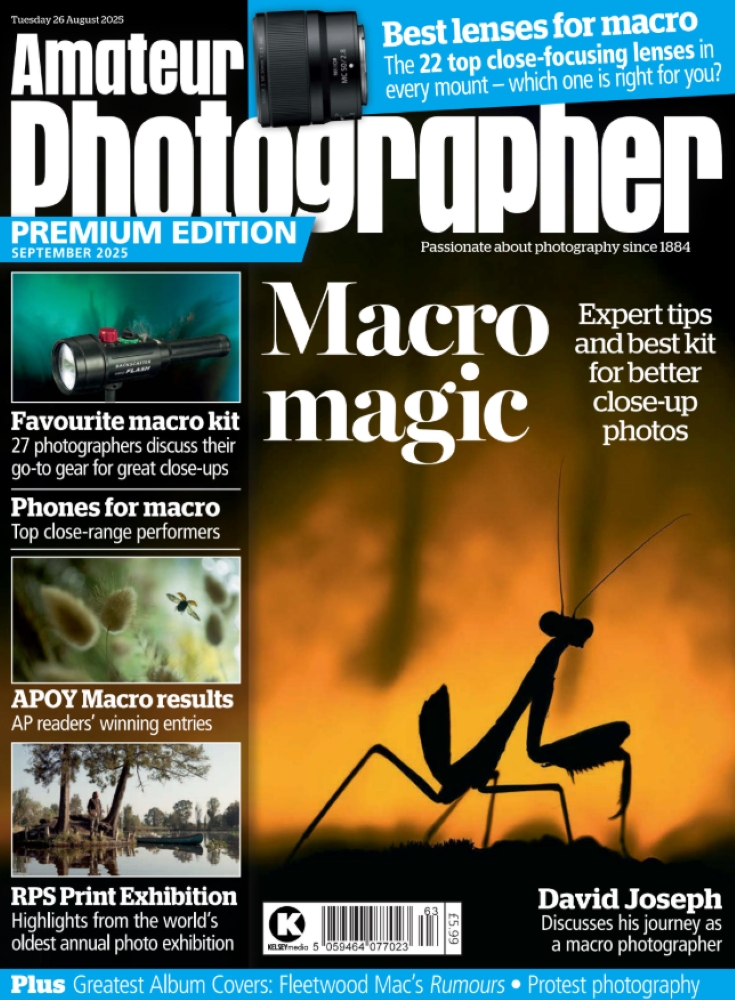Amateur Photographer verdict
This is an extremely capable smartphone, and for many could be all the phone you’ll ever need without spending big bucks, however, it’d be nice if macro features were added.- 8K/4K video (main/selfie)
- Triple camera setup
- Selfie camera has AF
- Good price/offers available
- Lacks macro focus option
- Anti-reflective coating would be nice
For most people this is all the phone you’ll ever need, and could be the best camera phone from Samsung, without going all the way up to a huge S25 Ultra, especially if you’re looking to save some money. However, it would be nice if the S25 series got the 5x lens, and anti-reflective screen coating from the Ultra model. Find out how it performs as I put this phone through its paces. The S25+ is almost as big as the S25 Ultra, do you really need the Ultra?
At a glance
- 50MP f/1.8 24mm equivalent, PDAF, OIS main camera
- 12MP f/2.2 13mm equivalent, FF, ultra-wide camera
- 10MP f/2.4 67mm equivalent, PDAF OIS telephoto camera
- 12MP f/2.2 26mm equivalent, PDAF, selfie-camera
- 8K 30/24p video main (4K from others)
- 6.7inch screen, 2600nits (peak), 120Hz, Dynamic AMOLED
- 4900mAh battery (45W wired, 15W wireless)
- 158.4 x 75.8 x 7.3mm, 190g, IP68
The Samsung Galaxy S25 series is part of Samsung’s flagship range of phones, with the S25 Ultra at the top, and the largest, with the S25 and S25 Plus under this offering a triple camera setup.
How I test camera phones
I review smartphones from the perspective of choosing one for its photography and camera performance. I look at what the Samsung Galaxy S25+ offers, and the features included for photography and video, paying particular attention to the cameras on the phone, photo editing capabilities, as well as the output from each different lens.
Features
The Samsung Galaxy S25+ (like the S25) has a triple camera setup on the back with an ultra-wide, wide, and telephoto cameras. The main difference between these two phones lies in the screen size and battery size, more on this later.
The 50MP main wide-angle (1x) is the best camera on the phone with the largest sensor and brightest aperture (f/1.8), and is the most likely to be used. It gives a 24mm equivalent field of view, and comes with optical image stabilisation (OIS) as well as PDAF (phase-detection auto-focus). Optical image stabilisation will help keep shots sharp when using slower shutter speeds, for example when shooting in low-light.
The next camera is the 12MP ultra-wide-angle camera (0.6x) with f/2.2 aperture, but unfortunately there is no auto-focus (AF), which rules out using this lens for macro photography, as it simply won’t be in focus.
The third rear camera is the 10MP telephoto camera, thankfully, this also has OIS, and offers a 3x telephoto reach, equivalent to 67mm, with f/2.4 aperture, and phase-detection auto-focus (PDAF).
Finally, there’s the 12MP selfie-camera, which includes auto-focus (AF), a 26mm equivalent wide-angle view, and an f/2.2 aperture, as well as supporting 4K video recording.
This main camera can record 8K video, whereas the other cameras can record 4K video, more on this later.
S25 vs S25+ models
The camera units on the S25 and S25+ (S25 Plus) are both identical. Where the difference lies is in the physical size, with the S25+ featuring a larger 6.7inch screen, compared to the 6.2inch screen on the S25. The S25+ also offers a higher resolution screen as a result, and the base model starts at 256GB, compared to 128GB on the S25.
Battery life is another area where the S25+ benefits from the larger size, as the S25+ comes with a 4900mAh battery (and faster 45W charging), compared to the 4000mAh battery (and 25W charging) on the S25. Which you choose will most likely come down to personal preference, but the good news is that both offer the same camera system, so your photos won’t be affected.
Handling and Design
The phone feels very well built, and has a stylish band made of metal running around the sides of the phone with a premium feel (and look), the colour of this varies depending on what colour phone you get. One issue I have with Samsung phones, is that they don’t provide any kind of additional screen protection in the box, which means you need to be careful with the screen, as I found out to my detriment with the S25+. A lot of budget phones come with a thin screen protector in a box, that helps keep your phone scratch free for longer, and even Corning Gorilla Glass Victus 2 isn’t perfect.
The screen has a relatively thin border, and this remains the same width all the way around the phone (something that budget phones often lack), with a neat curve in the corners. The screen is flat all the way over, with completely flat screens having benefits that, in my opinion, outweigh the looks of curved screens.
The S25+ in this review is the Navy Blue colour. There are some nice colour options available (including my favourite Navy Blue), but there are additional, exclusive, colours available on Samsung’s website (Coral red and Pink gold) as well.
Photo app…
The photo app starts off with the basic photo mode, being extremely easy to use, however if you want more control you can find that in the MORE option with Pro giving you manual controls, and if you want, you can add Expert RAW which lets you shoot raw photos (rather than just JPEG images).
All the usual shooting modes are available as well, including portrait, video, Pro video, night, food, panorama, slow motion, hyperlapse, portrait video, dual rec, and single take, in addition to the modes mentioned above.
Photo editing options include a good range of settings, and you can also use Samsung Galaxy AI to edit photos, with photo assist, drawing assist, audio eraser, and photo ambient wallpaper to name just a few of the AI features included.
Like all Samsung phones, you can quickly double-press the power button, and this will open the camera app, ready to shoot. Double press it again, and it will switch from the rear camera to the selfie camera (and vice-versa). Press the volume button(s) up or down, and you can use this to take a photo. This makes it really quick and easy to take photos, without having to unlock the phone first.
Performance
It doesn’t matter too much which camera you use, you’re going to get pleasing colours from all of them, especially when shooting in good light. In low-light, the best results can be found by using the main camera. Speaking of the main 50MP camera, it outputs 12MP images on default settings, and images have good levels of detail (but not outstanding).
Using the ultra-wide-angle camera, noise is well controlled, and images look well-corrected with minimal distortion visible. Images can look a little bit soft if you view them at 100%, but I don’t know of many people who do this, other than people who review cameras.
There’s also the option to zoom beyond 3x telephoto zoom, with the camera offering up to 30x digital zoom, however I wouldn’t recommend using this as the results lack detail and give a blurred image (an example of 10x can be found later in the review, and is perhaps the most I’d recommend using). In low-light the camera will automatically activate the Night mode, when it’s dark enough to warrant this, but for better results, and to ensure night mode is properly activated I’d recommend manually selecting it.
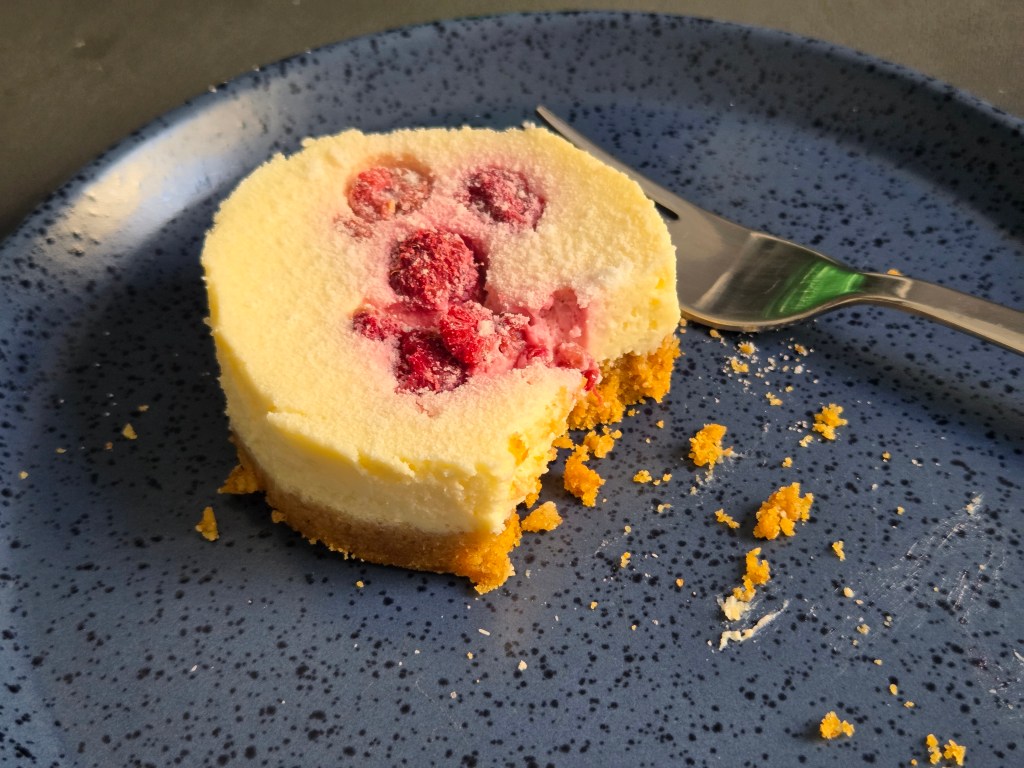
Taking close-ups with the main camera can work relatively well, as long as you don’t get too close to the subject. If you do, you’ll spot a lot of blur around your image. A plate of food, for example, looks great, but a close-up of a small cake can be a struggle. The food mode will boost the colours giving an image that you might find a bit too colourful, but your own personal tastes may be different to mine.

You can try and get close-ups using the 3x option on the camera, but if the subject is too close, then it will simply use the main camera and crop the image, without warning. This means you’ll only find out when you check the EXIF data on the image after shooting.

Using the telephoto camera, photos look good, with nice levels of detail considering the “low” resolution of a 10MP sensor. Photos are saved as 12MP images to match the photos you take with the other cameras on the phone.

Portrait mode can be used for subjects other than just people, and here I’ve used it in combination with the 3x telephoto camera to take this portrait of a cat, with a nicely blurred background (bokeh).
Selfie camera – with a 12MP selfie camera, and auto-focus, shots are clear and detailed, with the AF system ensuring the main subject has the correct focus point. This is often one of the first things to go missing from budget orientated phones, so it’s nice to see auto-focus here, as expected. This also benefits vlogging, and using the selfie camera for video recording.
Video options are more advanced than you might expect, with 8K available from the main camera, and 4K available from all the other cameras (including the selfie camera). There are plenty of options including stabilisation (on by default), as well as “Super steady” options, and a smooth zoom slider feature to help when zooming in and out. There’s also HDR video recording as standard, plus numerous audio options (in advanced settings). Video quality looks really good, and if you’re looking for a camera for YouTube, you’ll find there are a lot of people out there that use Samsung phones for video recording. You can also record Log in Pro video mode if you want!
Value for money
This phone, now that it’s been out for a while, can be found for around $795 / £799 (if you shop around) for the 256GB version (depending on colour) – this makes it cheaper than many other flagship phones and is a good deal. If you’re looking for a competitor that offers similar features, then you’re looking at the Google Pixel 9 Pro XL (with 6.8inch screen), Apple iPhone 16 Pro Max (with 6.9inch screen), and S25 Ultra (with 6.9inch screen) as the most obvious competitors. Perhaps the only phone that could beat the S25+ for both value and features is the S24 FE (with 6.7inch screen), or the S25 FE, when Samsung release that.
Verdict
For people looking for an affordable Android smartphone, without completely breaking the bank, with a good range of cameras, the Samsung Galaxy S25+ offers an excellent all-round package. There’s very little to complain about, although you might want more than the base 256GB especially if you plan on using the phone for video recording, or plan on keeping the phone for several years.

An area I’d like to see Samsung improve, is in the macro performance, but until Samsung offer periscope macro they’re not going to match (or beat) other brands. The S25+ has very limited macro abilities, having to rely on close focus from the main camera, or using the telephoto camera and hoping that the subject isn’t too close. If you can look past these issues, then you get a phone that’s a pleasure to use, and by going for one with larger storage you should have a phone that lasts many years, thanks to Samsung offering 7 years of updates.
This is the phone I’d buy if the S25 Ultra was too expensive, and for a lot of people it’s just a little bit too big, and a little bit too expensive. It’s a shame the anti-reflective coating is only found on the Ultra models in the range, as it really is impressive.
